Food for the Soul: Fashioning San Francisco
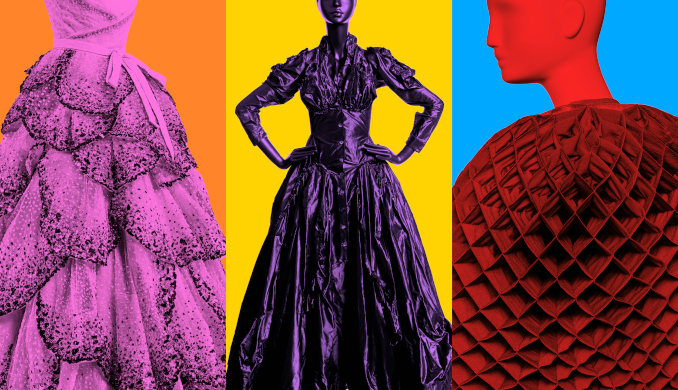
The theme of the rarefied world of New York socialites in the 1970s is being explored in the second season of the ongoing TV series Feud. This season’s story, Capote vs. The Swans, portrays the rise and fall of a gossipy relationship between Truman Capote and some of Manhattan’s most prominent rich and famous, who he infamously satirized.
San Francisco, the West Coast’s center for the moneyed elite, has provided a different look at the lives of socialites through an art show that showcases collections from Northern California. The exhibition, titled Fashioning San Francisco: A Century of Style, has just opened at the de Young Museum.
The museum’s collection of 20th-century haute couture, which has grown from donations by women philanthropists and collectors from the Bay Area, has been augmented by loans that illustrate the local styles and inspirations, especially from the 1960s-1980s period of distinct designs by international designers such as Dior, Alexander McQueen, and Balenciaga, but also the local Californian houses of fashion.
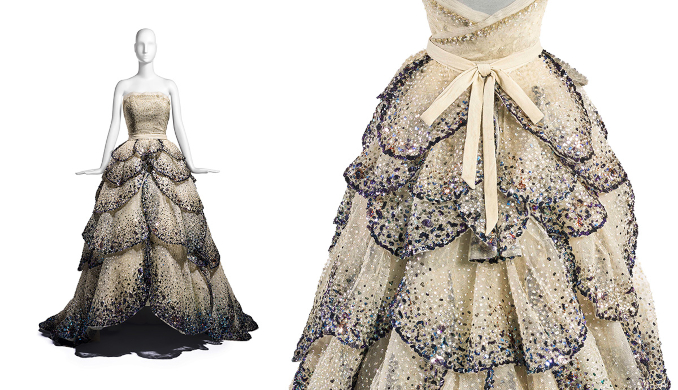
The highlight of the exhibition are the two Dior ballgowns from a 1949 haute couture Fall/Winter collection donated by I. Magnin & Company—a famous San Francisco luxury department store. Like works of art (which, after all, they are), these dresses even have names: Venus (with opalizing pearly rhinestones) and Junon (pictured above, with indigo sequins). They have been restored to their original glory, and they are displayed together.
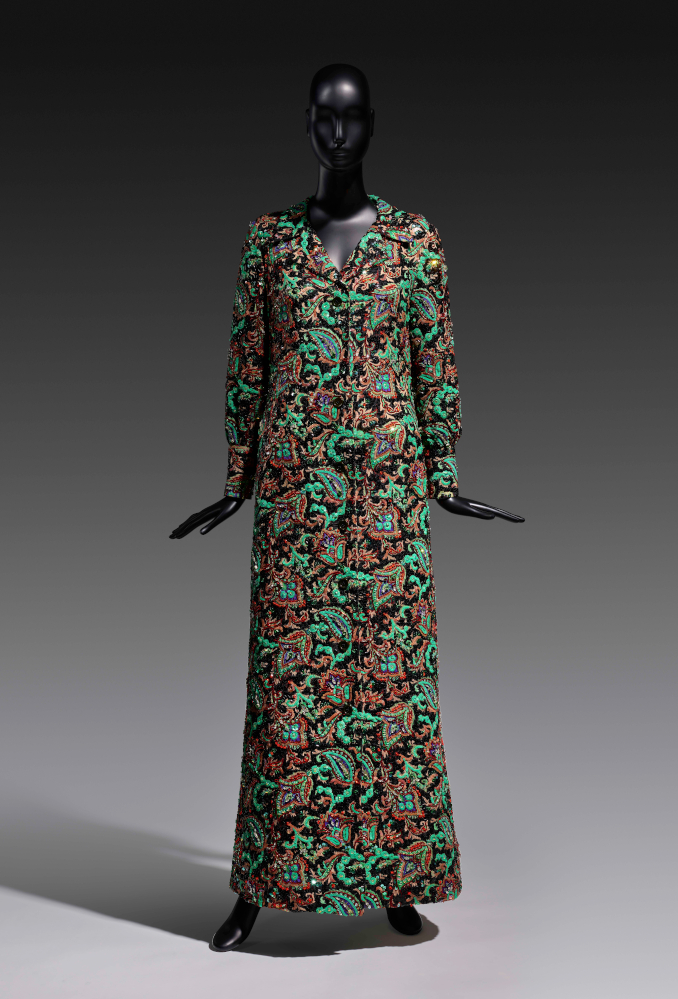
Some of the exhibits are examples of typical American evening gowns of the 1980s era, for instance the “kaftan” coat style that was very popular at the time. The San Francisco version of that look is made of an intricately embroidered fabric that is reminiscent of both the William Morris styles and richly ornamental fabrics of Persian rugs. Here is a detail of this fabric:
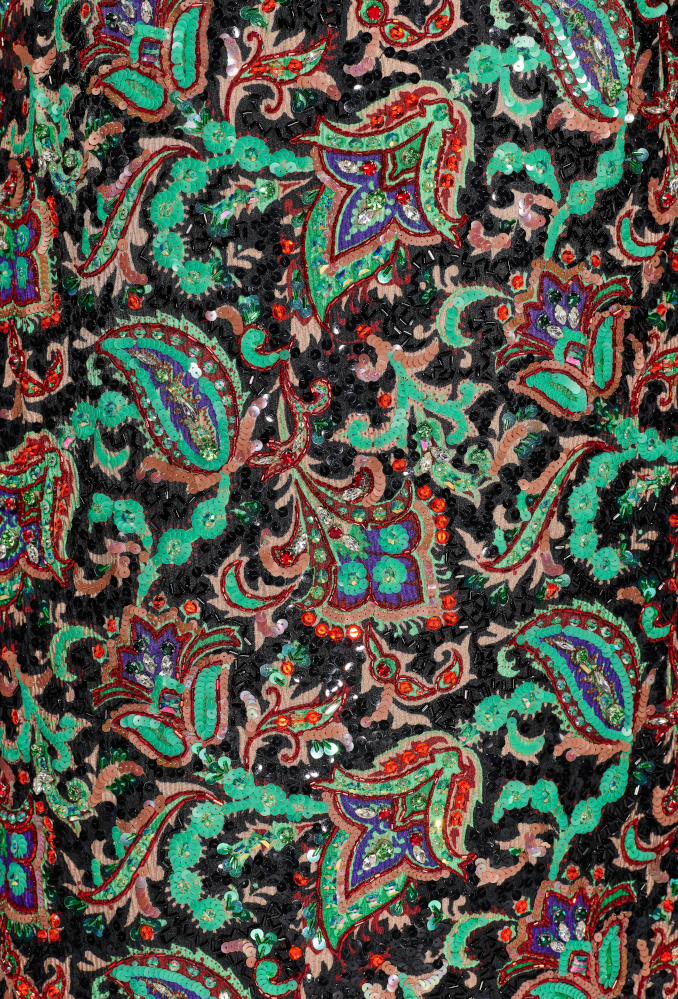
The San Francisco doyennes of civic and social life would wear the latest European fashions, often purchased straight from major designers’ catwalks. The eye-catching, red and gold short dress comes from Angels and Demons, the last collection of the late Alexander McQueen in 2010.
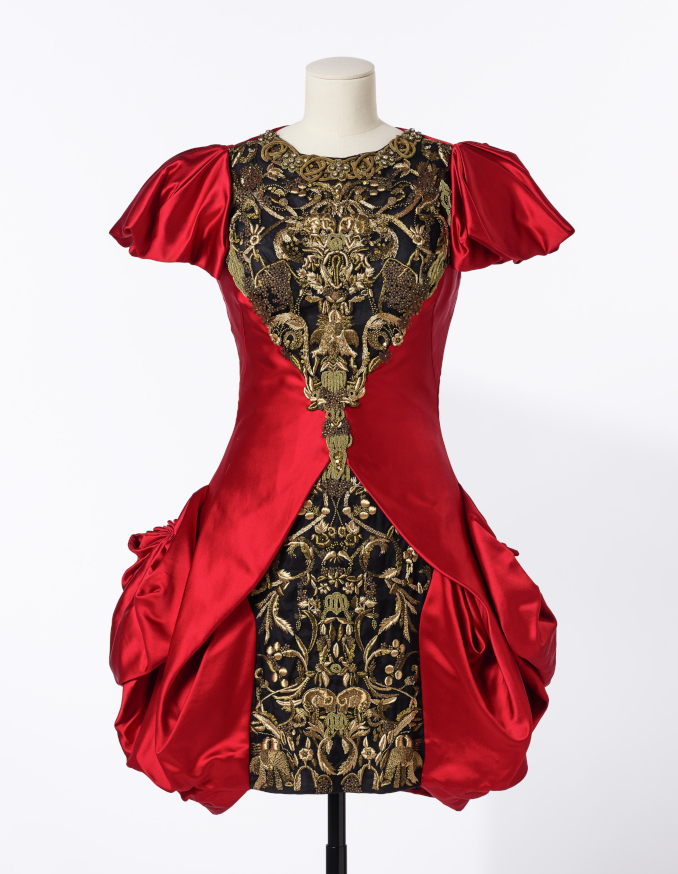
Another haute couture example is a 1987 evening dress by Valentino made of silk taffeta in a Renaissance style from old masters’ paintings.
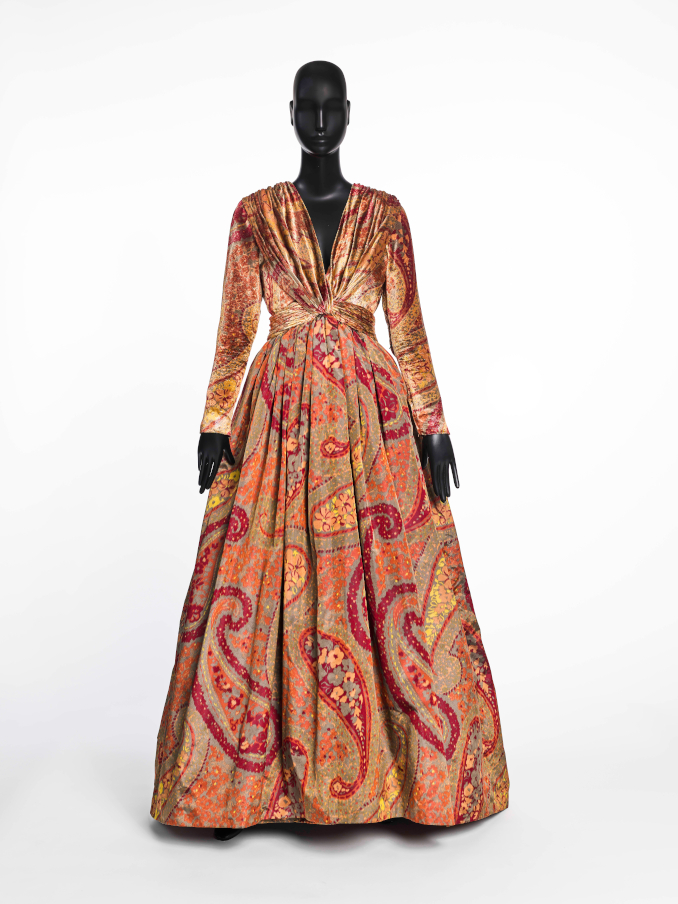
In fact, any visitor to the exhibition can “try on” that dress by having a picture taken in an augmented reality (AR) booth where the image is fitted onto the visitor’s body, providing a memorable picture for uploading to personal accounts at social media. This is what such a dress looks on a visitor:
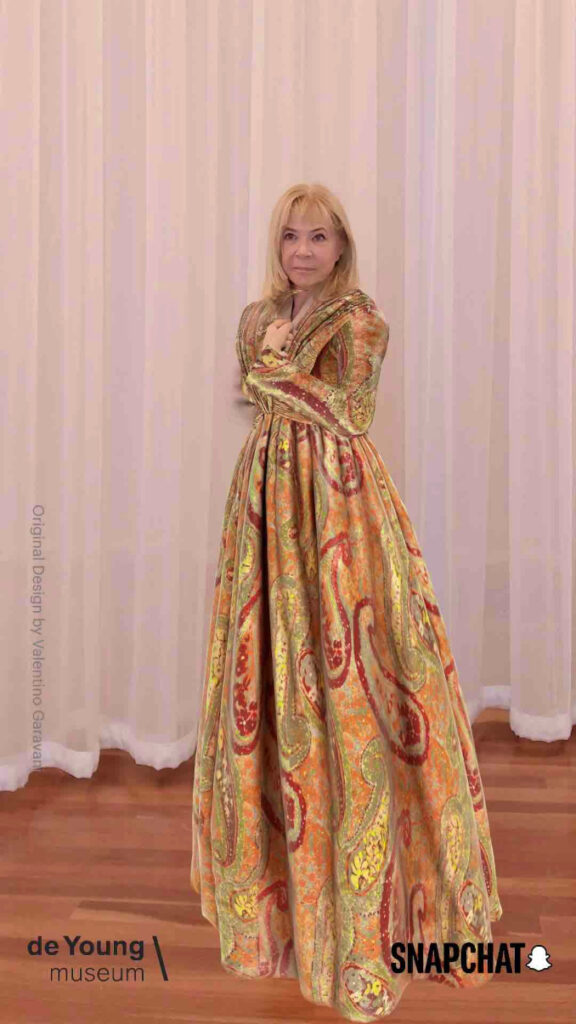
The most unique part of the exhibition are the examples of local couture—clothes designed by Asian or Pacific Basin-inspired fashion houses and sold to West Coast-based clients. These designs would not necessarily have made waves in New York, where the weather is colder and the palettes are more somber, but they expressed quite well the tastes and vibes of California. San Francisco’s vibrant social and political scene was a perfect stage for the women of the Bay Area to showcase the best designs that evoked California’s more laid-back style.
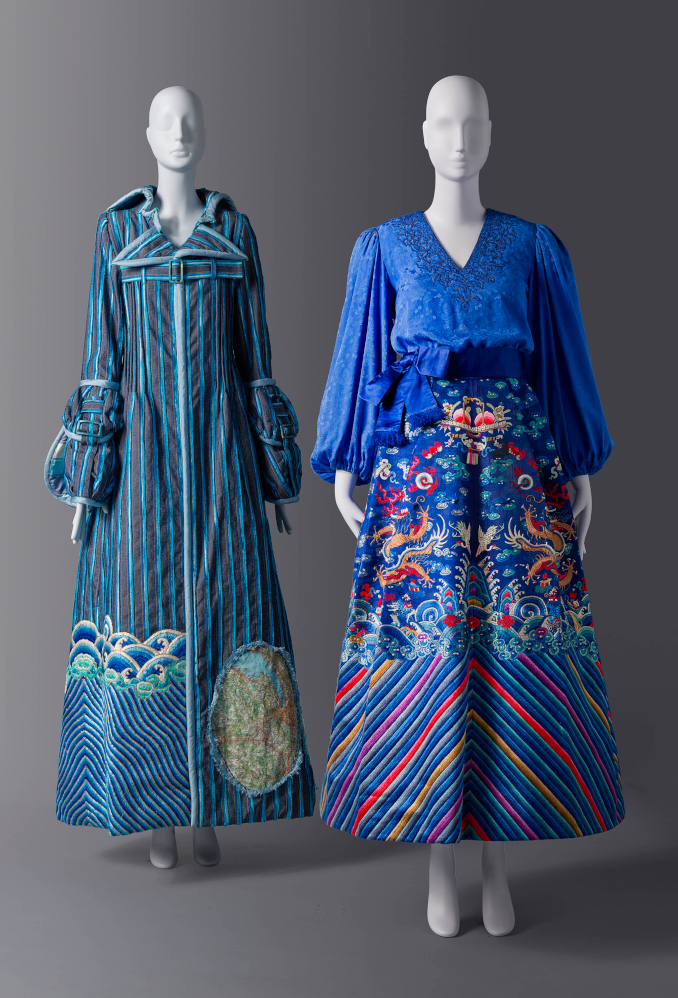
The silk embroidery skirt (on the right in the photo above) was designed by Frederick Gibson Bayh, who was an in-house fashion designer for Gump’s, another venerated luxury department store downtown. For designs such as this skirt, Bayh would use some antique Chinese embroideries, which must have found their way to the Bay Area during a century of immigration from across the Pacific. Below are two examples of 1970s designs from Asian designers: the late Kaisik Wong, a San Francisco representative of the wearable art movement of the late 20th century, and Junya Watanabe, a Japanese native who still designs for the French house Comme des Garçons and whose wearable art is often categorized as “techno-couture.”


The exhibition celebrates all this mélange of influences, Asia-inspired in particular, that contributed to haute couture worn by women leading the social and cultural scene of the Bay Area. Very inspiring. Fashioning San Francisco: A Century of Style is on view from January 20 through August 11, 2024 at the de Young Museum in San Francisco.
